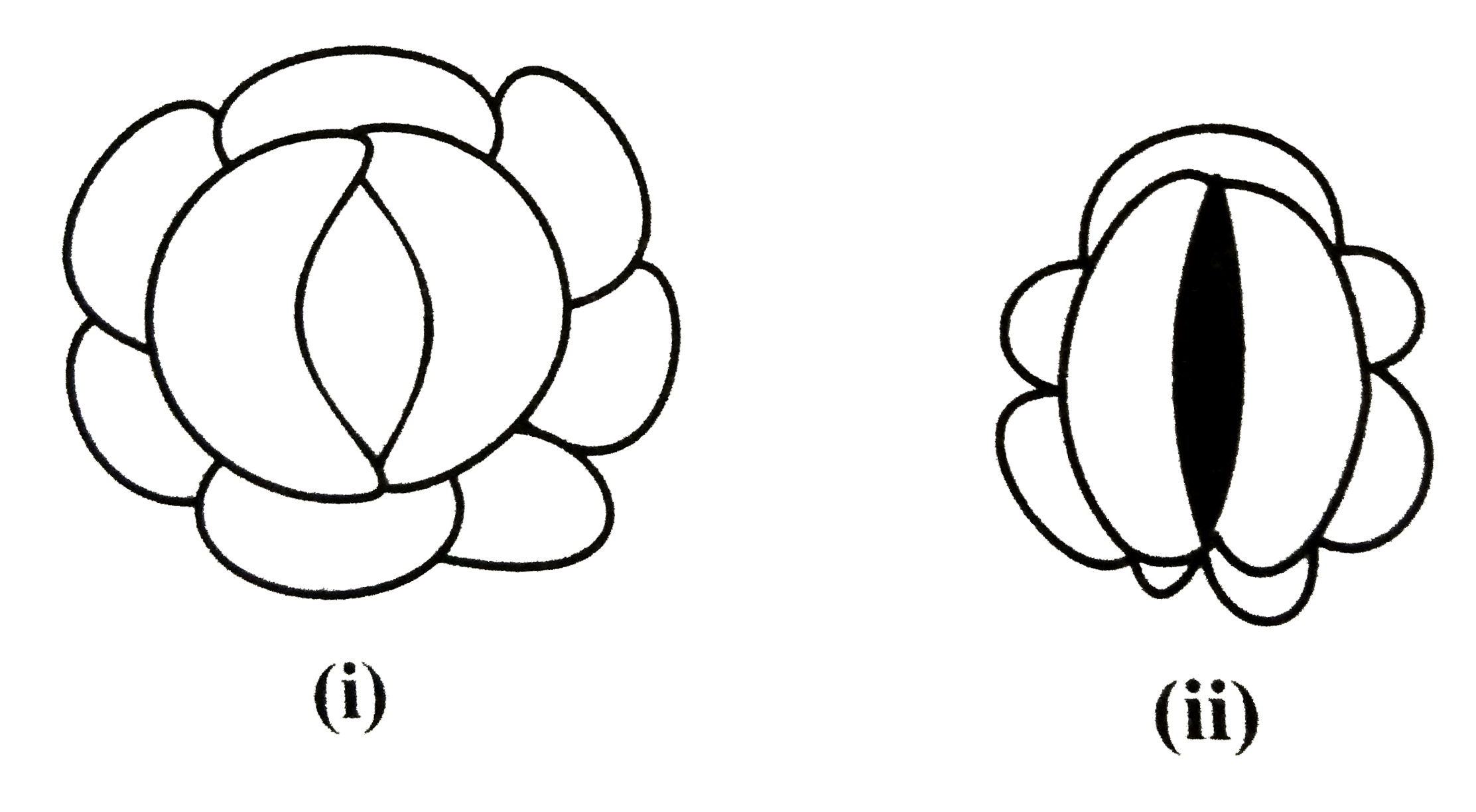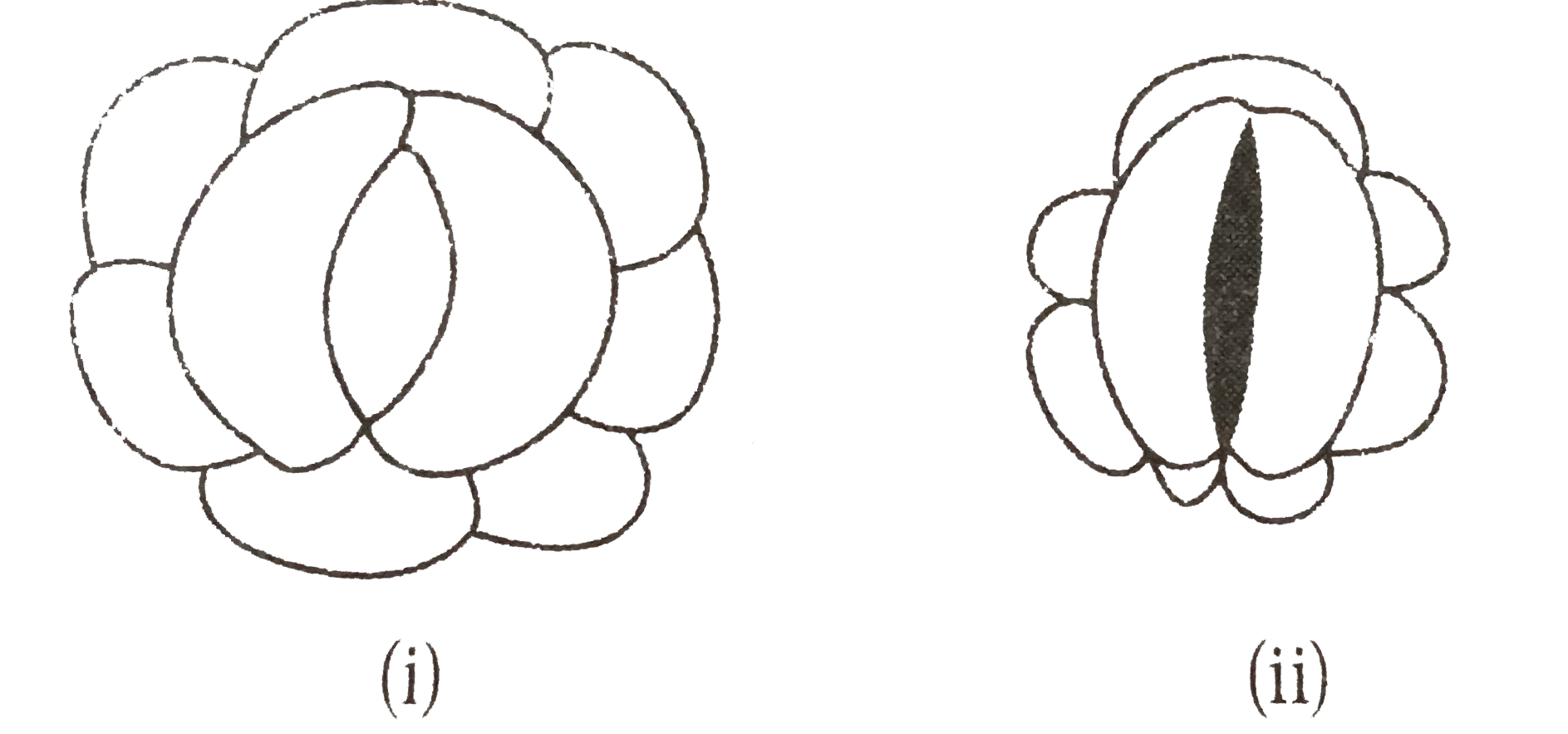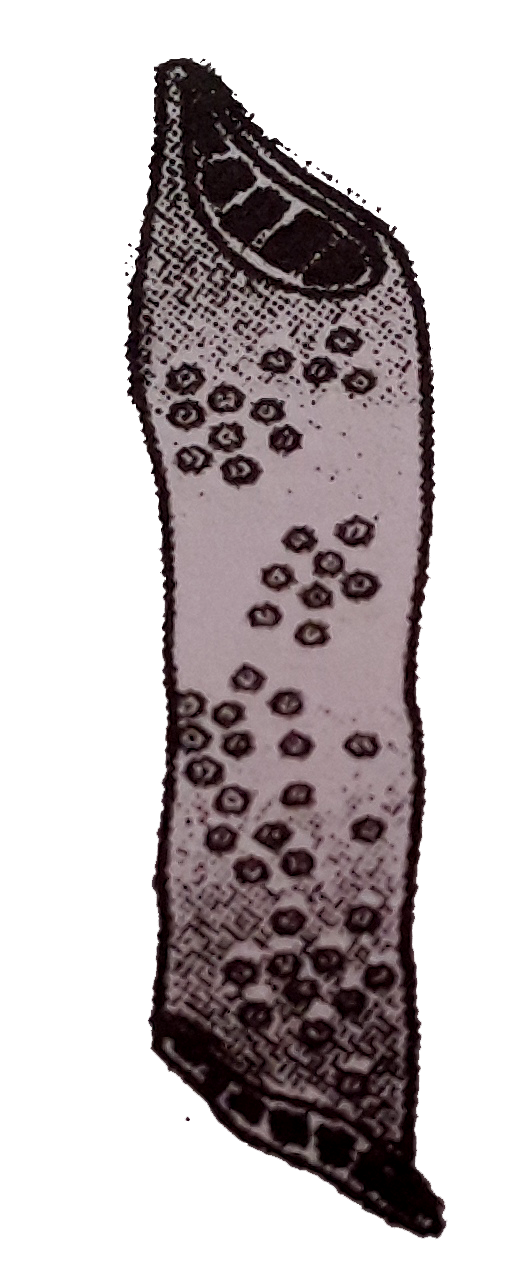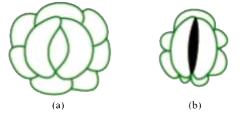The given figure shows two states of a stomata

In which of the conditions (i) and (ii), guard cells will have higher water content?
(i)only
(ii) only
Equal in both
No water content in both
The correct Answer is:A
When water supply is adequate, guard cells become turgid their thin walls get extended and thick walls become sligtly concave so that the stomatal aperture opens as shown in figure, condition (i).
Topper's Solved these Questions
- TRANSPORT IN PLANTSBOOK - NCERT FINGERTPS ENGLISHCHAPTER - TRANSPORT IN PLANTSEXERCISE - Uptake and Transport of Mineral Nutrients
3 Videos
- TRANSPORT IN PLANTSBOOK - NCERT FINGERTPS ENGLISHCHAPTER - TRANSPORT IN PLANTSEXERCISE - Phloem Transport:Flow From Source To Sink
11 Videos
- TRANSPORT IN PLANTSBOOK - NCERT FINGERTPS ENGLISHCHAPTER - TRANSPORT IN PLANTSEXERCISE - Long Distance Transport of Water
12 Videos
- THE LIVING WORLDBOOK - NCERT FINGERTPS ENGLISHCHAPTER - THE LIVING WORLDEXERCISE - The Living World
130 Videos
Similar Questions
What will happen to a plant cell if it is kept in a solutin having higher water potential ?
View SolutionObserve the diagram and answer the following.

(a) Are these types of guard cells found in monocots or dicots ?
(b) Which of these shows a higher water content (i) or (ii) ?
(c) Which element plays an important role in the opening and closing of stomata ?
View Solution
Knowledge Check

The given figure shows which of the following cells?Acompanion cellBsieve tube elementCXylem vesselDXylem tracheid
The given figure shows which of the following cells?Acompanion cellBsieve tube elementCXylem vesselDXylem tracheidStomata open when guard cells show
AIncrease in both osmotic and turgor pressuresBDecrease in both osmotic pressure and turgor pressureCIncrease in osmotic pressure but decrease in turgor pressureDDecreases in osmotic pressure increase in turgor pressure
Observe the diagram and answer the following.

(a) Are these types of guard cells found in monocots or dicots ?
(b) Which of these shows a higher water content (i) or (ii) ?
(c) Which element plays an important role in the opening and closing of stomata ?
View SolutionObserve the diagram and answer the following :

(a) Which of these guard cells show a higher water content, A or B ?
(b)Are these types of guard cells found in monocots or dicots ?
(c) Name the element which play an important role in the opening and closing of stomata.
View SolutionThe water potential in guard cells during day time in photoactive stomata
View SolutionThe ion which shows active influx into guard cells during day time in a photoactive stomata
View SolutionStomatal movements are influenced by a number of environmental factors, Which of the following statements is /are incorrect regarding this?
(ii)Blue light keeps stomata open during the day pormoting the movement of K+ ions into guard cells.
(ii) Increased CO2 concentraation reduces the pH of guard cells which promotes conversion of sugar into starch ultimately causing closure of stomata.
(iii) Abscisic acid under stress conditions, causes repid movement of K+ ions into guard cells.
Highly concentrated sucrose or salt solution when applied over to stomata results in stomata opening.
View Solution
